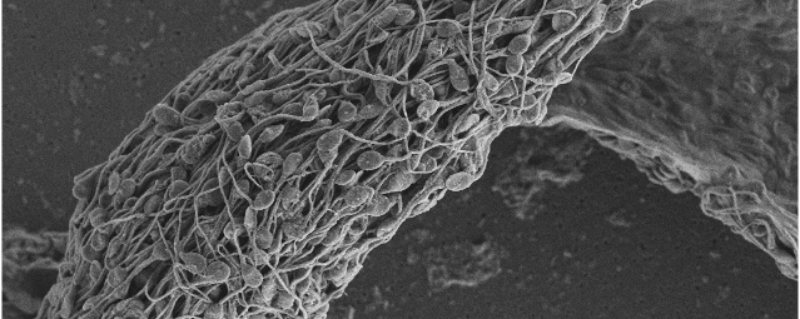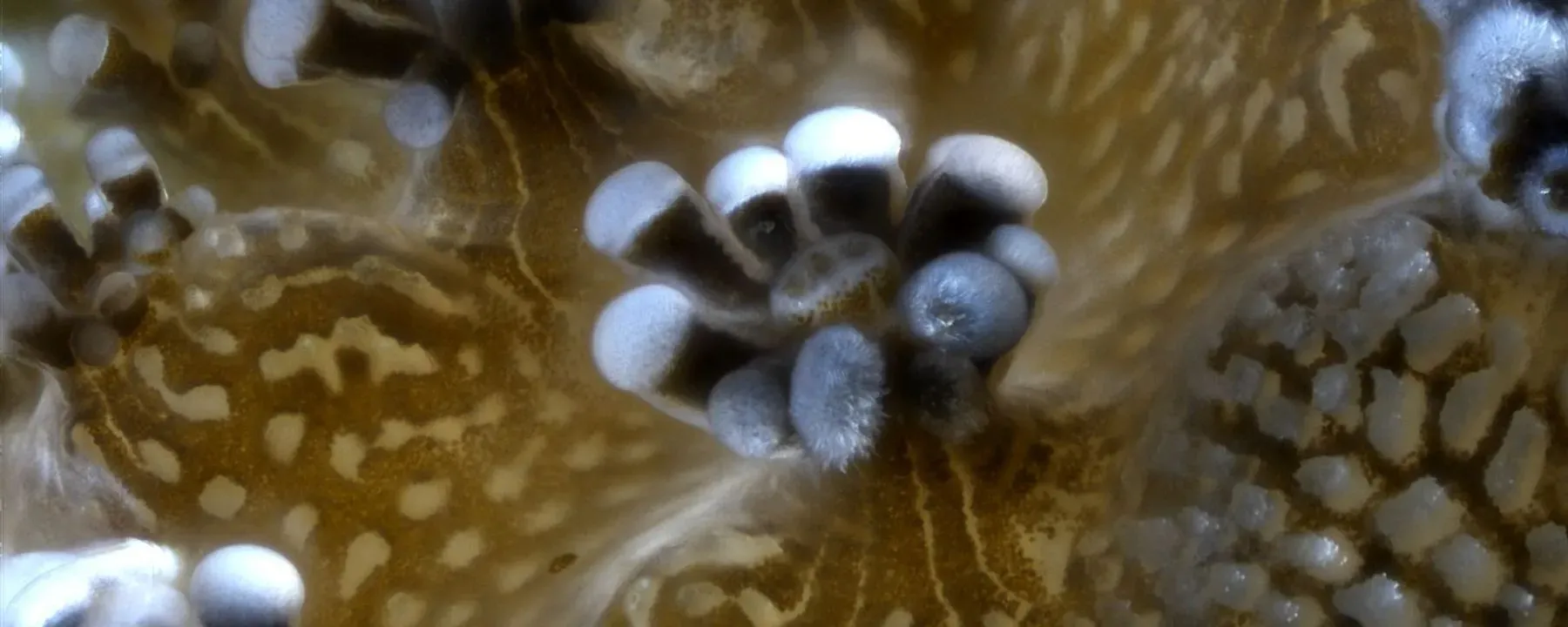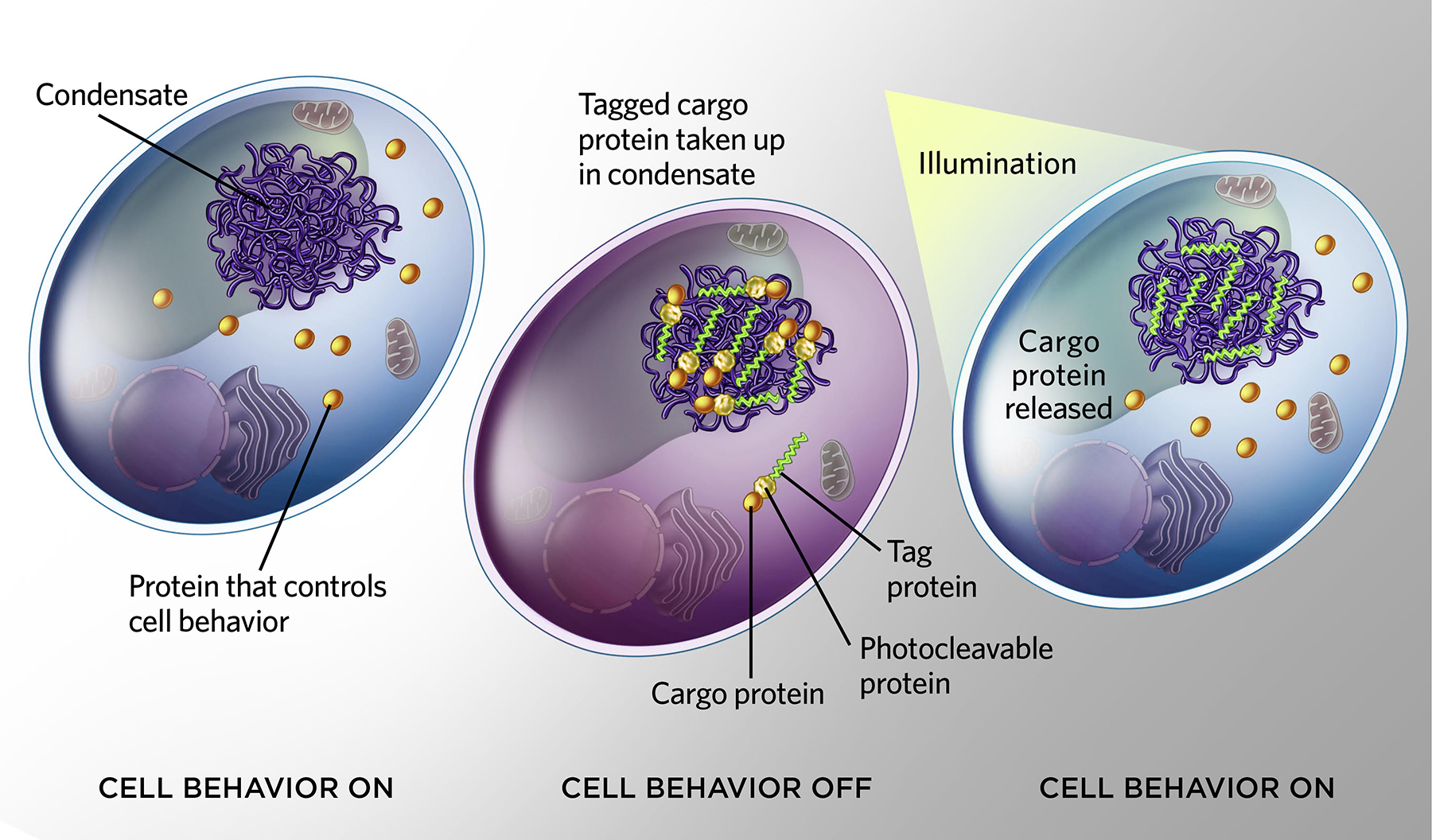Can Single Cells Learn?
It’s a controversial idea—that smarts can arise in the absence of a brain—one that started back in the middle of the 20th century. Psychologist Beatrice Gelber reported in 1962 that a single-celled organism called a paramecium could learn to associate a piece of wire with food, much like Pavlov’s dogs had learned to associate a buzzer with mealtime. Now, the idea is getting a more serious look from the scientific community, with a handful of recent experiments suggesting that some forms of memory can be encoded intracellularly, possibly supporting the emergence of complex behaviors across the animal kingdom. “The great insight is that these are all instances of one fundamental capacity that exists in a wide range of systems: the ability to alter your future behavior based on your past experience,” says Tufts University regenerative and developmental biologist Michael Levin.
What’s the Deal with Bacterial Nanotubes?
Recent years have seen the publication of some perplexing findings regarding bacterial nanotubes, membranous cellular structures that appear to form hollow connections between microbes and allow the transfer of molecular materials. Some work has even suggested that these nanotubes can link up bacteria with mammalian cells. But certain groups have had difficulty replicating findings that demonstrated the existence and utility of the structures, with some speculating that rather than long-overlooked features of the biology of living microbes, nanotubes are produced only by dying cells. Still, Hebrew University of Jerusalem microbiologist Sigal Ben-Yehuda, who with colleagues published his first paper reporting the existence of bacterial nanotubes in 2011, is convinced that more research will demonstrate their importance even among healthy microbes. “Science is a marathon, and we are running a marathon, not a sprint.”

Synthetic Organelles Let Researchers Control Cell Behavior
In a nifty new way to control cell behavior, researchers have designed a scaffold protein that forms condensates, or membraneless organelles, and can collect a cargo protein that would otherwise be needed for a cellular function. This is achieved by linking the cargo to a peptide tag that interacts with the scaffold protein. And by incorporating a photocleavable protein, the system becomes reversible, with light breaking down the photocleavable portion to release the cargo back into the cytoplasm, where it can reboot the corresponding cell behavior. “You can change cellular outputs and complex cell function by either concentrating [a particular factor] into a corner or letting it go from the corner [of the cell],” says Edward Lemke, a biophysical chemist at the Johannes Gutenberg University Mainz and IMB Mainz in Germany who was not involved in the work. “Just showing that this is possible, I think that is really cool.”
Antibodies Stop Sperm in Their Tracks
A new form of birth control has shown promise in animal testing: engineered human antibodies successfully nabbed more than 99.9 percent of human sperm introduced into sheep’s reproductive tracts. The authors (some of whom started a company, Mucommune, to develop antibody-based contraceptives) argue that it could serve as a much-needed alternative to hormonal birth control options. Pascal Gagneux, an evolutionary biologist at the University of California, San Diego, who was not involved in the research, praises the study for “a lot of impressive work and a really interesting idea.” He adds that more testing is needed to evaluate the approach in humans, however. “This thing better be really, really airtight, because even if it’s surprising how many sperm get incapacitated, as long as you have one, you could still theoretically get pregnant.”

Comprehensive Atlas of Reef-Building Coral’s Cells Created
An in-depth look at the smooth cauliflower coral (Stylophora pistillata) has yielded information on 40 cell types, including the first immune cells known for any coral. Tali Mass, a marine ecologist at the University of Haifa in Israel, and colleagues devised a new protocol that cut sample prep time from 48 hours to 15 minutes, allowing them to sequence the transcriptomes of more than 37,000 individual cells. Patterns of gene expression represented in the sequenced transcripts formed the basis of cell type clustering and identification. “This is something we’ve been needing to do forever in coral science,” says Nikki Traylor-Knowles, a coral immunologist at the University of Miami who was not involved in the study. The paper is a “treasure trove” that will “help so much of the molecular and functional work that has been stifled in the coral field for so long.”

See “Restored Corals Spawn Hope for Reefs Worldwide”
Interested in reading more?









